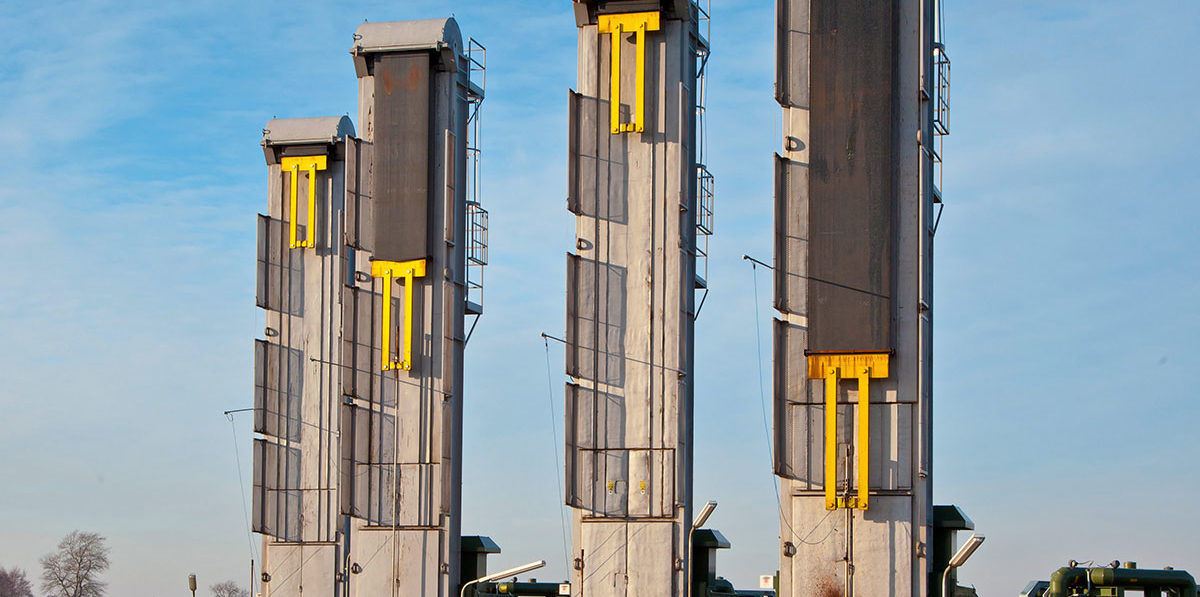Design Carbon the key to improving EOR

Carbon capture could provide a breakthrough in EOR techniques (Image credit: pixonaut)
Related Articles
Improved methods of enhanced oil recovery (EOR) will make the single largest contribution to lifting the technically recoverable volumes of oil and gas in the next 35 years, according to a new BP report that predicts technology will add 2 trillion barrels of oil equivalent to global reserves in that timeframe. EOR alone will contribute a 12{157e9e7102f993fdcdb49a514d57e19b1f7a504cd9dfa4238ab6a9a4dbf85dae} increase to reserves, with improvements in subsurface imaging, drilling and completions, facilities and digital technologies combining for an additional 23{157e9e7102f993fdcdb49a514d57e19b1f7a504cd9dfa4238ab6a9a4dbf85dae}.
Crude oil production generally includes three distinct phases. When production begins, about 10{157e9e7102f993fdcdb49a514d57e19b1f7a504cd9dfa4238ab6a9a4dbf85dae} of the oil in a reservoir flows to the surface under its own pressure. In the next phase, water or gas is injected to extract an additional 20-40{157e9e7102f993fdcdb49a514d57e19b1f7a504cd9dfa4238ab6a9a4dbf85dae} of the oil. In the tertiary – or enhanced oil recovery – phase, steam, gases or chemicals are injected into the reservoir to lower the viscosity of the oil and extract additional reserves.
Issue of storage
Carbon dioxide (CO2) injections have been used for enhanced oil recovery in the United States since at least the 1970s. A major barrier to its expansion has been the lack of supply, said Pierre Yves Chenet, head of chemical EOR solutions at Beicip Franlab.
Should cheaper ways of capturing and transporting CO2 be developed, added IHS Energy EOR specialist James Murphy, then it could turn out to be “a real game changer”.
This problem could be addressed if carbon capture and storage (CCS) – the process of capturing waste CO2 from large sources such as fossil fuel power plants – is ever commercialized on a large scale.
“There is significant interest in reducing anthropogenic CO2 emissions. If there were either a cheaper way of capturing CO2, or [if] companies were provided incentives to reduce their emissions, that could significantly increase EOR deployment worldwide,” said Murphy.
Another major problem hampering the development of many CO2 injection projects has been the lack of avenues by which to transport existing supplies, said Chenet. For the gas to be readily available to oil operators, it would require the building of a pipeline to take it from industrial producers to areas where the gas is needed.
The US has partially addressed the issue with the building of a network of pipelines across more than a dozen states and into Canada, connecting geologic and industrial sources of CO2 with EOR projects in oil fields. About 80{157e9e7102f993fdcdb49a514d57e19b1f7a504cd9dfa4238ab6a9a4dbf85dae} of CO2 traveling through the pipelines is from geologic sources; however, the Department of Energy (DOE) believes that if currently planned industrial CO2 capture facilities and new pipelines are built, by 2020 the portion of CO2 from industrial sources could nearly match the portion from geologic sources.
EOR is predicted to provide the single biggest contribution to increased recoveries (Image credit: BP)
As of 2010, there were about 114 commercial CO2 injection projects in the US that together injected more than 2 billion cubic feet of CO2 and produced more than 280,000 barrels of oil per day, according to the DOE.
For offshore operators, the picture is not as simple: companies in the Gulf of Mexico say they are looking into ways of sourcing CO2, but a step change is unlikely without some form of government subsidy.
In Europe there have been some CCS pilots, although the UK government last month cancelled a £1 billion ($1.5 billion) program. But unlike the US, European governments have not made any moves to build a CO2 pipeline to supply gas for re-injection into oil fields, noted Chenet.
New substances needed
CO2 aside, the most progress is likely to come from “new types of substances” developed specifically for the purposes of EOR, such as gases that interact in a specific way with the oil in the well, Chenet said.
Chemical flooding, which accounts for only 1{157e9e7102f993fdcdb49a514d57e19b1f7a504cd9dfa4238ab6a9a4dbf85dae} of US EOR production – compared to 60{157e9e7102f993fdcdb49a514d57e19b1f7a504cd9dfa4238ab6a9a4dbf85dae} from gases and 40{157e9e7102f993fdcdb49a514d57e19b1f7a504cd9dfa4238ab6a9a4dbf85dae} from thermal techniques – could become a more viable option if operators can find a way to reduce the relatively high costs.
One option could be to mix an alkaline chemical like sodium carbonate which reacts with acidic oil components to create petroleum soap, a surfactant, Chenet said.
The more sophisticated EOR solutions, he added, combine gas and chemicals which are injected either from above or the side.
“Emerging technologies include injecting some form of bubbles or foam gas from above,” he said.
Another chemical named by both Chenet and Murphy was polymer – which when mixed with water creates a fluid that has a viscosity similar to olive oil. Polymer becomes a cheaper option to alkaline surfactants when looking only at the cost of chemicals throughout the lifetime of the well and not at the total project costs, according to Murphy.
“But the question is: can those chemicals hold up under reservoir conditions – high pressure, high heat,” he said.
The viability of any new EOR method depends on the existing infrastructure around the oil field, Murphy noted.
The other major barrier, unsurprisingly is cost: EOR comes with a high price tag and projects can take several years to develop and test. While the large oil companies are capable of financing and handling all the steps in the process, the smaller operators may have to look for different solutions – or hope for a turnaround in the oil market.
